Welcome to the History of Microsoft Windows Series. This is Part 1 of 3. The following Windows editions are covered in this article:
- Windows 1.0 (v1.01)
- Windows 2.0 (v2.0.3)
- Windows 2.1x (v2.10)
- Windows 3.0 (v3.00)
- Windows 3.1 (v3.10)
- Windows 95 (v4.00)
- Windows 98 (v4.10)
- Windows ME (v5.0.1)
To read about rest of the Windows editions, read the next two articles of the Windows History series:
- From Windows 1 to 10. The History of Microsoft Windows. Part 2 of 3
- From Windows 1 to 10. The History of Microsoft Windows. Part 3 of 3
Windows 1.0 (v1.01)
- Windows 1.0 was released on November 20, 1985.
- Windows 1.0 was a 16-bit Operating System (OS). It was called Windows because the OS displayed different programs on different small screens called “Windows”. Originally, the Windows project was developed under the codename “Interface Manager”. It was the first Operating System with Graphical User Interface (GUI) made by Microsoft. A GUI allows users to point-and-click and start the selected applications instead of typing commands in Command prompt. Microsoft provided Windows 1.0 with a hardware accessory called mouse. The mouse was called the Microsoft Mouse. It was released on May 2, 1983. To make people familiar with the use of mouse, Microsoft also included a game with the OS that acted as a training device for the users using the Mouse for the first time. The game was called Reversi.
- Notepad and Paintbrush debuted in Windows 1.0.
- In-built Printer
- Windows 1.0 was considered a failure. However, it was also considered an important OS in the history of Microsoft and Personal Computing.
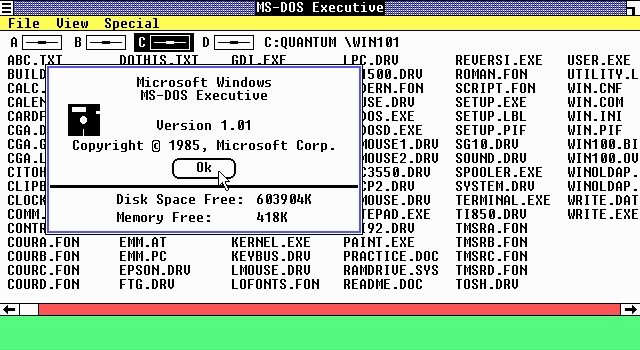
Windows 2.0 (v2.03)
- Windows 2.0 was released on December 9, 1987.
- One of the most important features of Windows 2.0 was its ability to Overlap program windows unlike the Windows 1.0.
- Windows 2.0 introduced Desktop Icons and Keyboard Shortcuts for programs.
- Minimize and Maximize terms were first used in Windows 2.0.
- Windows 2.0 was the first Windows OS to have a Control Panel.
- It had limited graphics support. It included VGA Graphics (only 16 colours).
- The first versions of Microsoft Word and Microsoft Excel debuted in Windows 2.0.
Windows 2.1x (v2.10)
- The Windows 2.1x family was released on May 27, 1988.
- The two Windows 2.1 editions were also called Windows/286 and Windows/386 because they were developed to use the features of the newly released Intel 80286 and Intel 80386
- Windows 2.1x was the first Windows that required a Hard Disk for its installation.
Windows 3.0 (v3.00)
- Windows 3.0 was released on May 22, 1990.
- The first version of Microsoft PowerPoint was introduced along with Windows 3.0.
- Microsoft Solitaire made its debut.
- GUI based Program Manager and File Manager were bundled with this OS. Program Manager had icons of various programs. It replaced the command-line based program called MS-DOS Executive. The File Manager allowed used users to use the graphical user interface instead of the commands to execute the file management operations like copy, move, delete, etc.
- Windows 3.0 was a big improvement over its predecessors in the graphics support. Now, it supported 256 VGA colours.
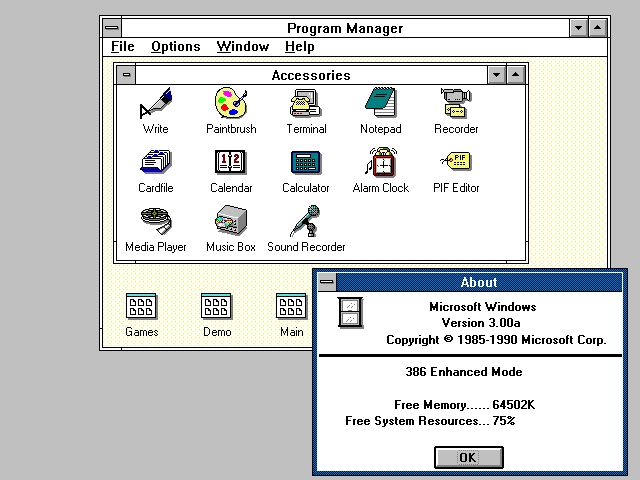
Windows 3.1 (v3.10)
- Windows 3.1 was released on April 6, 1992. It was the first Windows OS to be distributed on a Compact Disc (CD).
- The Program Manager was upgraded in this version of Windows, now it contained a new group called the StartUp The StartUp group contained all the programs and files that would start with the operating system.
- The File Manager was redesigned for better performance and more features. The new File Manager supported multiple panes. This version also allowed the drag-and-drop functionality in the File Manager. For example, if you wanted to print a text file then you just needed to “drag” the file icon and “drop” it in the Print Manager icon in the File Manager.
- Windows 3.1 had improved support for networking.
- The TrueType font technology was introduced in Windows 3.1.
- Minesweeper debuted with Windows 3.1
Windows 95 (v4.00)
- Windows 95 was released on August 24, 1995. The year of release was 1995 that’s why the number 95 in the name.
- Windows 95 featured huge improvements in the GUI over its predecessor, Windows 3.1. Windows 95 introduced some of the most important features of the Windows Operating System.
- The Start button and the Start Menu appeared first time on Windows 95.
- The Taskbar was introduced in Windows 95.
- Windows introduced the AutoRun feature, which used the inf file.
- The Internet Explorer made its debut with Windows 95. It was released as a part of Microsoft Plus! upgrade pack for Windows 95. It was called Microsoft Internet Explorer at the time of its release. Later, it was renamed to Internet Explorer 1.
- A video conferencing client called Microsoft NetMeeting also debuted with Windows 95.
- The plug-and-play feature was introduced in Windows 95. With the help of this feature, the system would automatically find the drivers for the attached hardware input.
- Windows Update was introduced as a website. Users could visit the website and download the selected updates available for Microsoft products.
- Windows 95 supported 32-bit applications and pre-emptive multitasking. It was based on the hybrid kernel model. The hybrid model used the 16-bit DOS-based kernel and 32-bit user space.
Windows 98 (v4.10)
- Windows 98 was released on June 25, 1998. It was based on the hybrid 16-bit and 32-bit monolithic kernel just like its predecessor, Windows 95.
- Windows 98 had more support for USB devices. Now, Windows supported USB hubs, USB scanners and other imaging devices. Windows also supported USB keyboard, mouse and joystick.
- The Disk Cleanup tool debuted in Windows 98. It’s used to clean unnecessary files from the system and keep thus keeping the system optimized.
- Windows Explorer had many improvements. Back and Forward navigation buttons were added. The address bar appeared for the first time in Windows Explorer.
- Microsoft introduced another very important system utility called the System Configuration Utility (msconfig) in Windows 98.
- The Critical Update Notification Tool was made available to download shortly after the release of Windows 98. This tool would periodically check the Windows Update website for any updates marked as Critical. If found, it would alert the user about these updates.
- Windows introduced the AutoPlay feature, which used the inf file.
- Internet Explorer 4 was released.
- Microsoft NetShow Player was introduced which would later become Windows Media Player.
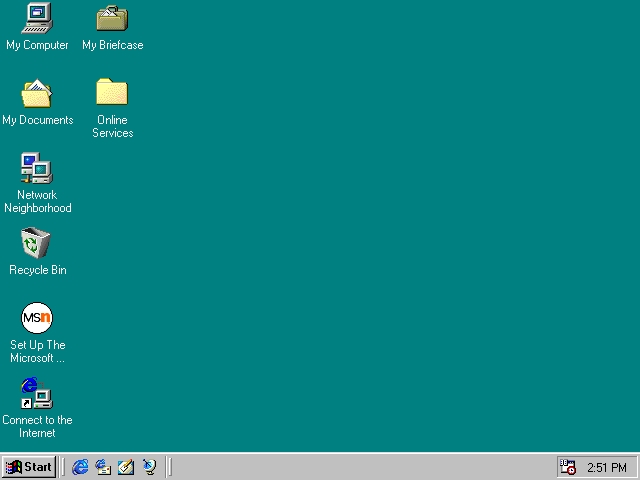
Windows ME (v5.0.1)
- Windows ME was released on September 14, 2000. ME stands for Millennium Edition.
- Windows Update was preinstalled for the first time in any Windows OS.
- One of the most important Windows features called System Restore debuted with Windows ME. System Restore allows the user to revert the state of programs, windows settings and registry settings back to the point of the creation of any of the restore points in the past manually by the user or automatically by the system. System Restore is helpful in recovering from a system malfunction.
- Image Preview utility was introduced. Now, images could be previewed without having to open them.
- Internet Explorer 5.5 was released.
- Windows Media Player 7 was released.
- Windows Movie Maker made its first appearance with Windows ME.
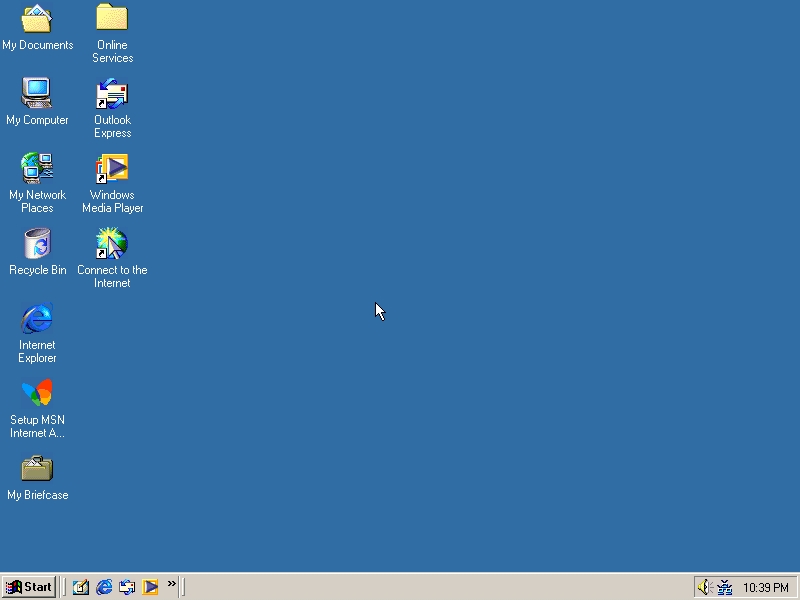
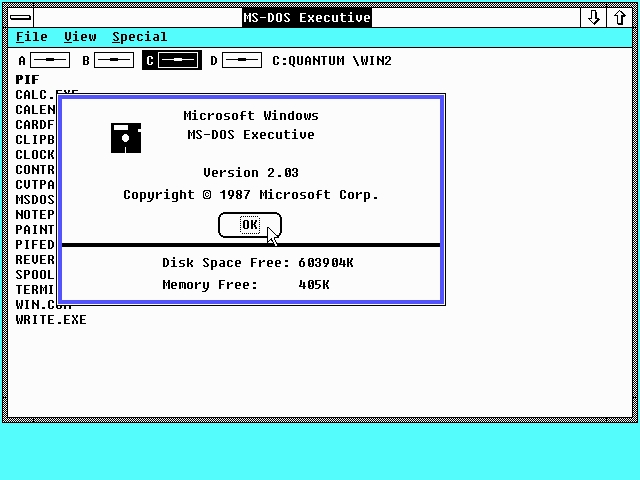
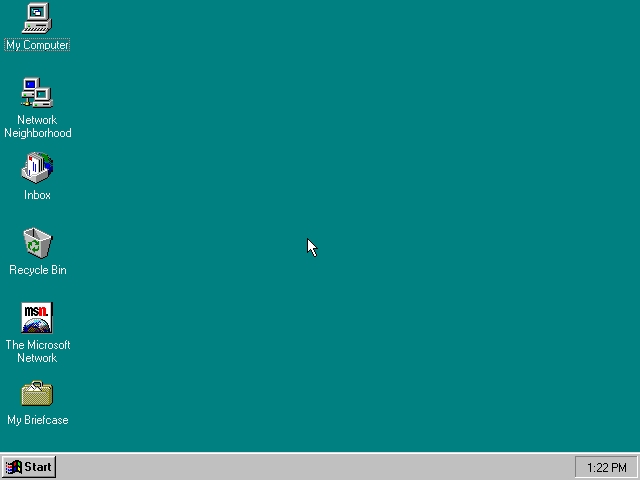
1 thought on “From Windows 1 to 10. The History of Microsoft Windows. Part 1 of 3.”